Last updated 07.25.2024
Tooth extraction healing: Your path to a smooth recovery
Learn the stages of tooth extraction healing and tips for a smoother recovery after getting an extraction.
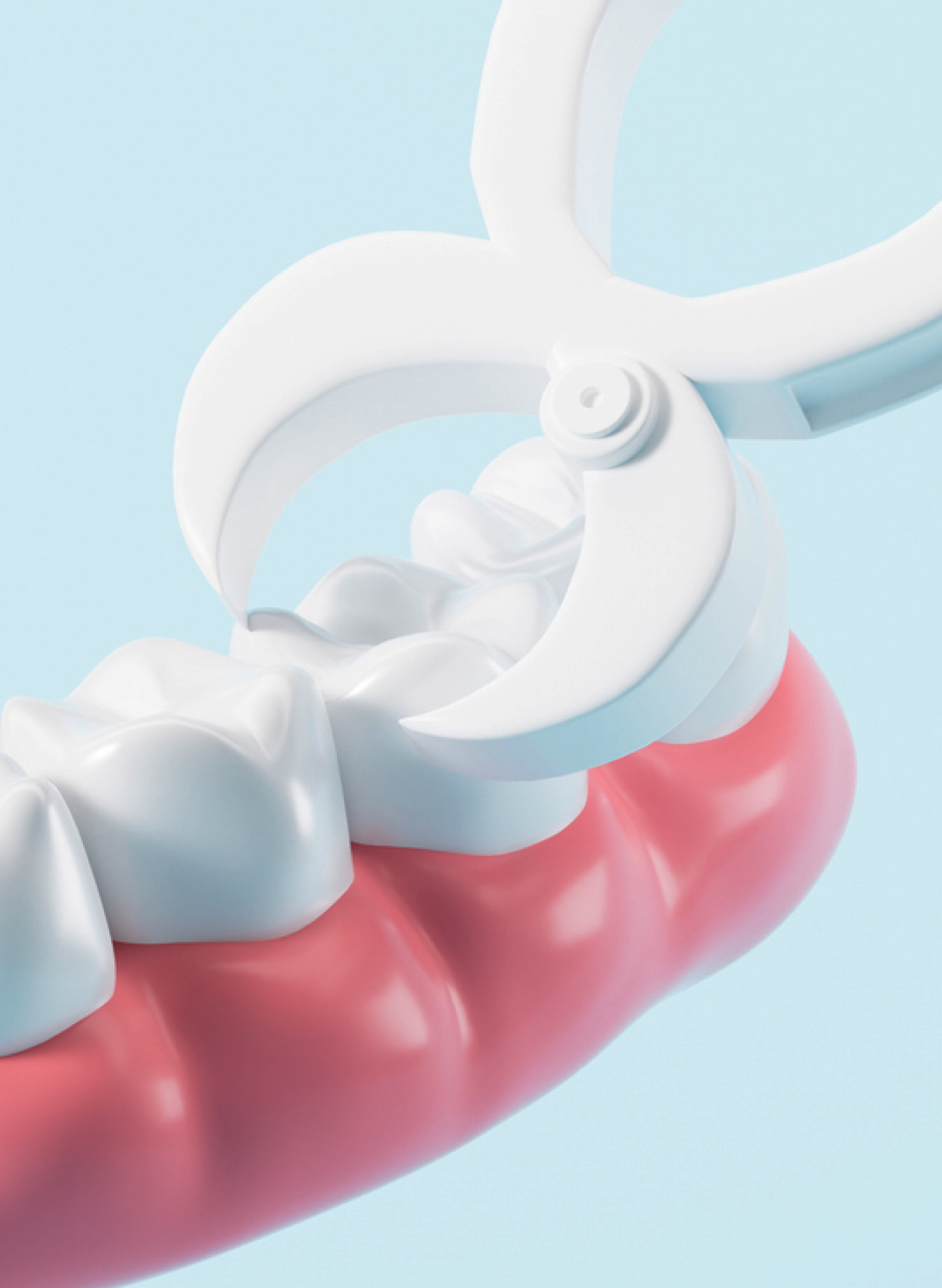
If you have an upcoming tooth extraction appointment, we know it can feel a bit overwhelming. Tooth extractions are often needed due to decay, infection, or other dental issues, and can bring up a lot of concerns. The healing process is a crucial part of this procedure, and if not taken seriously, it can lead to complications. But don’t worry – with the right care and understanding, the healing process doesn’t have to be daunting or prevent you from going through with the procedure. Knowing what to expect and how to care for yourself afterward can help ensure a smooth recovery and keep your smile healthy.
Tooth extraction healing time
Healing from a tooth extraction can vary significantly from person to person, depending on several factors. Generally, most people can expect initial healing within a week, but complete healing of the extraction site may take several weeks to a few months.
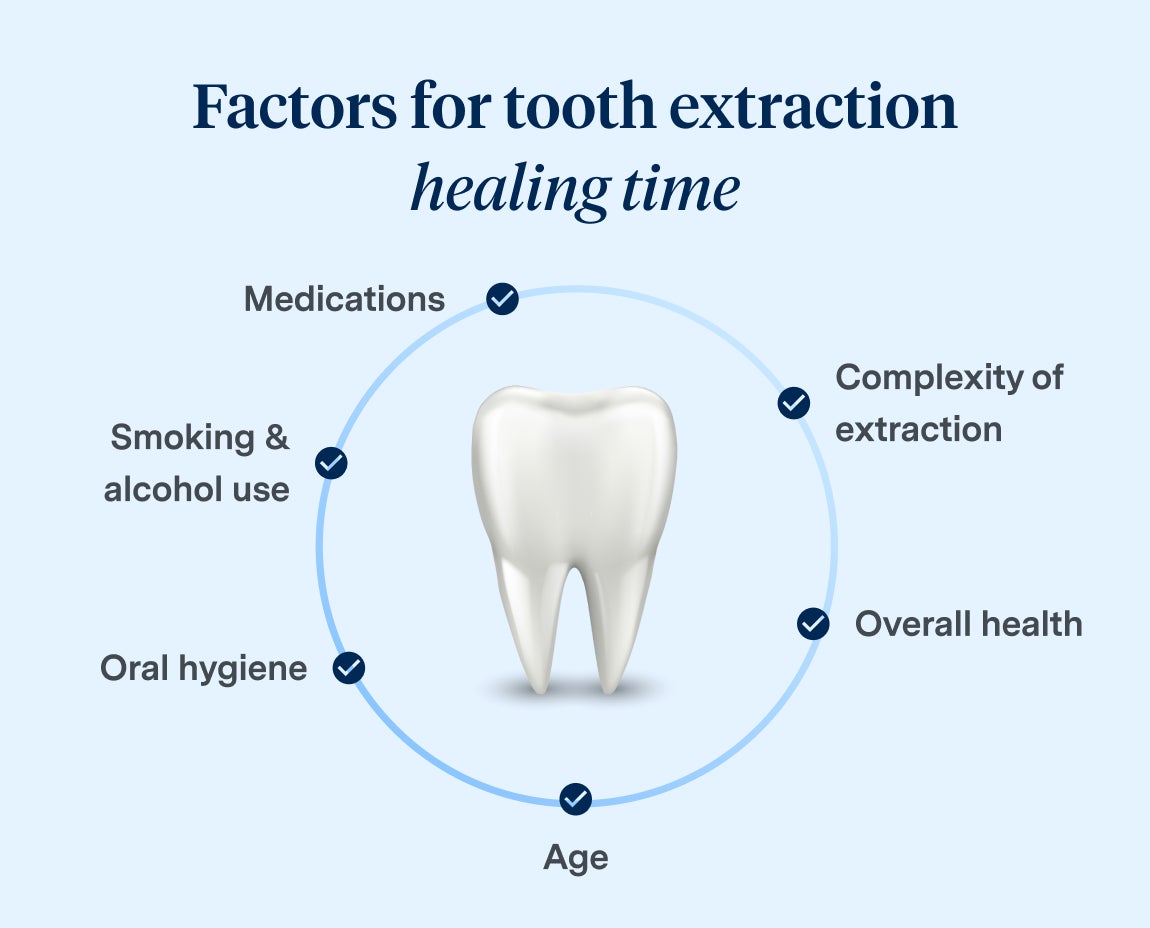
Factors that influence a tooth’s healing time
1. Complexity of the extraction
Simple extractions, such as removing a tooth that is fully erupted, generally heal faster than more complex extractions, such as impacted wisdom teeth that require surgical intervention.
2. Overall health
Individuals with underlying health conditions, such as diabetes and lupus, or those with compromised immune systems, may experience slower healing.
3. Age
Younger patients tend to heal more quickly than older adults.
4. Oral hygiene
Proper oral hygiene practices can significantly affect the healing time. Keeping the extraction site clean and free from infection is crucial.
5. Smoking and alcohol use
Smoking and excessive alcohol consumption can impair healing and increase the risk of complications.
6. Medications
Certain medications, such as blood thinners, can impact the body's ability to heal efficiently.
Tooth extraction healing stages
Understanding the stages of healing after a tooth extraction can help set realistic expectations and ensure proper care during recovery.
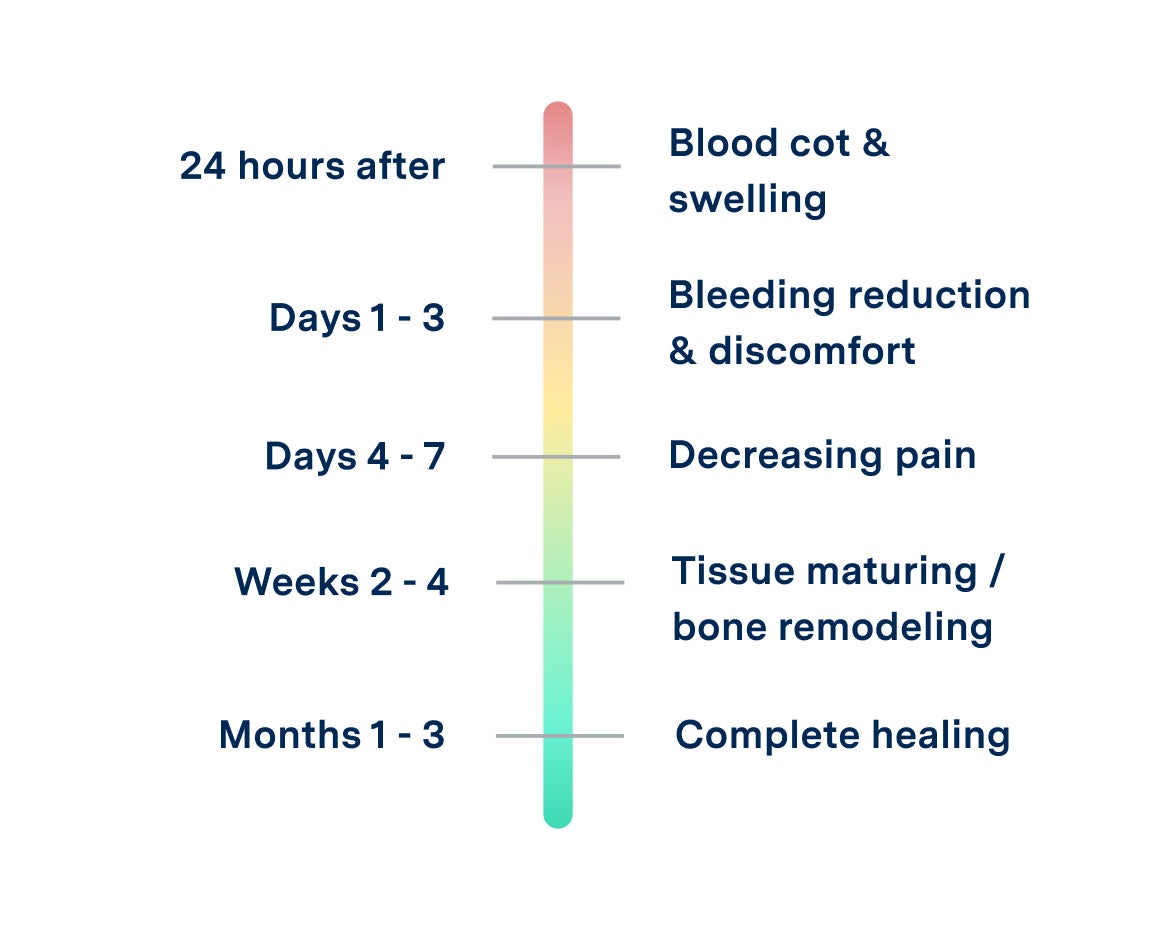
Immediate post-extraction (first 24 hours)
Blood clot formation
After the tooth is removed, a blood clot forms in the socket to stop bleeding and protect the underlying bone and nerve endings.
Initial swelling
Swelling and minor bleeding are common during this stage. Applying a cold compress can help reduce swelling.
Early healing (days 1-3)
Reduction in bleeding
Bleeding should subside within the first few hours, and the clot should remain in place.
Pain and discomfort
Pain peaks within the first 24-48 hours and can be managed with prescribed or over-the-counter pain medications.
Granulation tissue formation
Soft tissue starts to form around the extraction site.
Mid-healing (days 4-7)
Decreasing pain and swelling
Pain and swelling should gradually decrease. If not, consult your dentist.
Tissue regeneration
New tissue begins to fill in the socket, and the blood clot becomes more stable.
Late healing (weeks 2-4)
Tissue maturation
The granulation tissue matures and strengthens.
Bone remodeling
The bone starts to remodel and fill in the extraction site.
Complete healing (3-6 Months)
Full integration
Complete healing of the extraction site, including bone remodeling and the formation of new gum tissue, can take a few months.
Types of tooth extractions and their impact on healing time
The type of tooth extraction can significantly affect the healing process and time required for recovery.
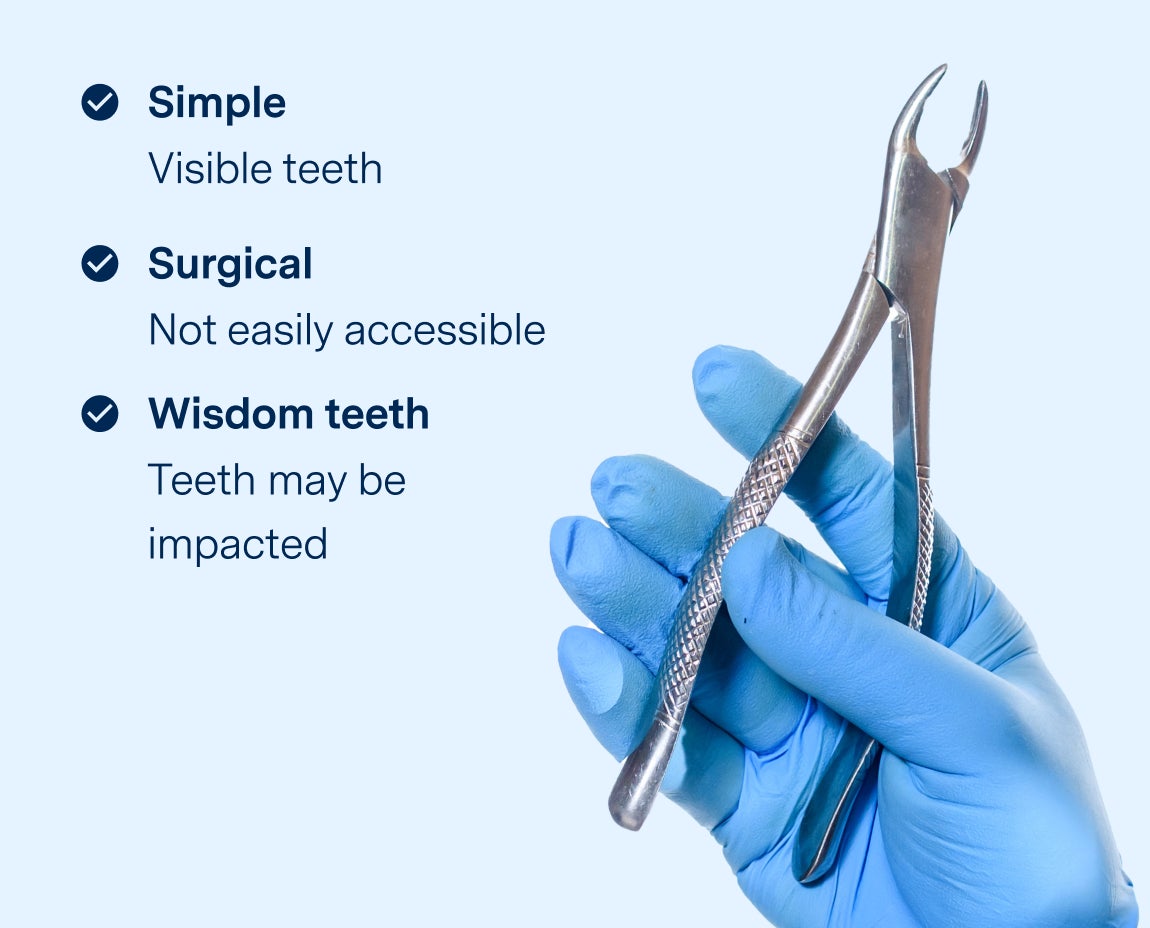
Simple extractions
Performed on visible teeth using a simple extraction technique. May include multiple teeth.
Healing time
Generally heals faster, often within one to two weeks.
Surgical extractions
Required for teeth that are not easily accessible, such as impacted wisdom teeth. This involves making an incision in the gum. This type of extraction also may include multiple teeth.
Healing time
Takes longer to heal due to the complexity of the procedure, typically several weeks to a few months.
Wisdom teeth extractions
Wisdom tooth extractions often involve removing multiple teeth and dealing with bone removal.
Healing time
Healing can take longer, and there is a higher risk of complications such as dry socket.
Aftercare tips for tooth extraction healing
Proper aftercare is essential to ensure a smooth recovery and prevent complications.
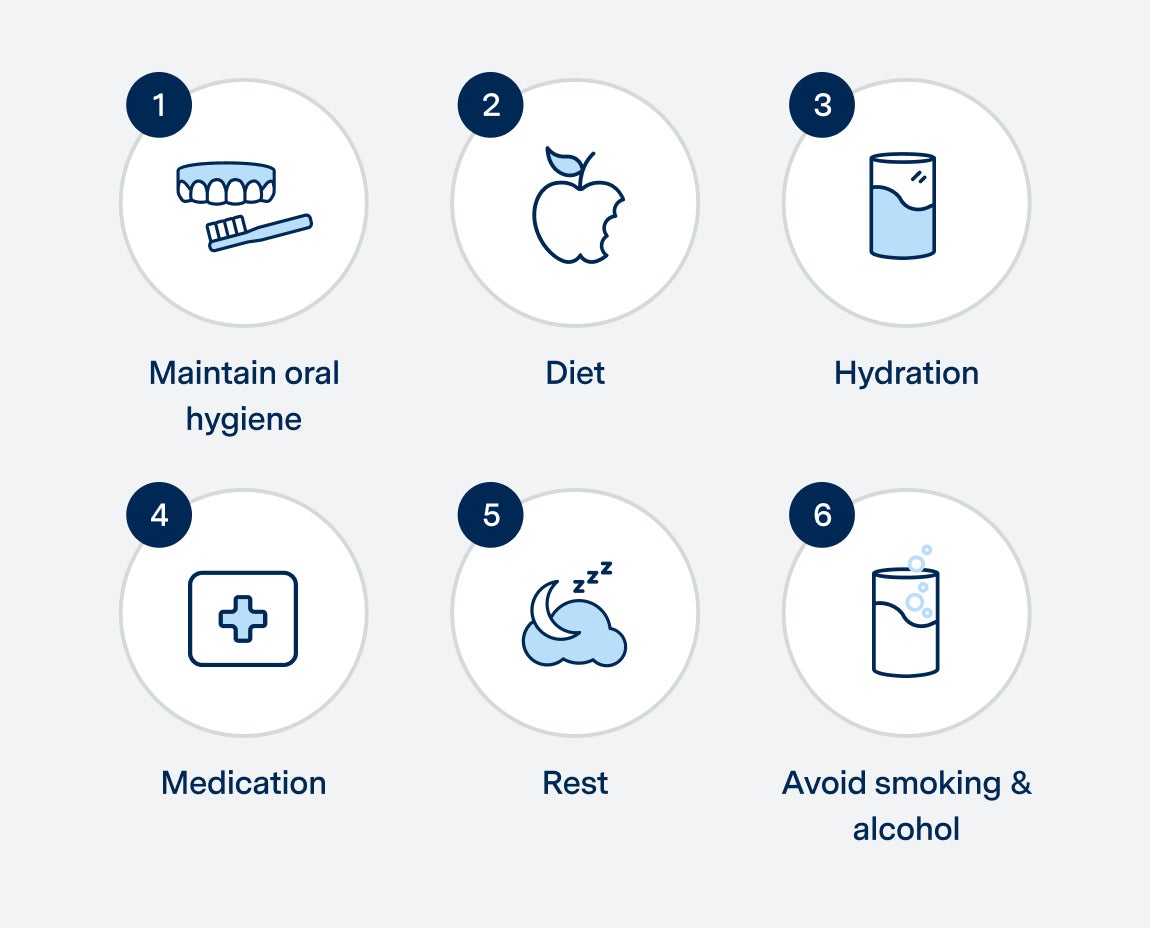
Maintain oral hygiene
Gently rinse your mouth with warm saltwater starting 24 hours after the extraction.
Avoid brushing the extraction site directly for the first few days.
Diet
Stick to soft foods like yogurt, applesauce, and mashed potatoes.
Avoid hot, spicy, and hard foods that can irritate the extraction site.
Hydration
Drink plenty of fluids but avoid using straws as the suction can dislodge the blood clot.
Medication
Take prescribed pain relievers and antibiotics as directed by your dentist.
Rest
Get plenty of rest and avoid strenuous activities for the first few days.
Smoking and alcohol
Avoid smoking and alcohol consumption, as they can impede healing and increase the risk of complications.
Potential complications and how to address them
While most tooth extractions heal without issues, complications can arise. Being aware of these potential problems and knowing how to address them is crucial.
Dry socket
Symptoms
Severe pain, missing blood clot, foul odor.
Treatment
Contact your dentist immediately. They may clean the socket and apply a medicated dressing.
Infection
Symptoms
Persistent swelling, fever, pus discharge.
Treatment
Antibiotics prescribed by your dentist and proper oral hygiene.
Prolonged bleeding
Symptoms
Bleeding that continues beyond the first 24 hours.
Treatment
Bite on a gauze pad and apply pressure. If bleeding persists, contact your dentist.
Nerve injury
Symptoms
Prolonged numbness or tingling.
Treatment
Most cases resolve over time, but severe cases may require further treatment from a dental professional.
Risk factors affecting tooth extraction healing
Certain factors can increase the risk of complications and may prolong the healing process.
Smoking
Delays healing and increases the risk of dry socket and infection.
Poor oral hygiene
Can lead to infections and slower healing.
Chronic health conditions
Conditions such as diabetes can impair the body's ability to heal.
Medications
Blood thinners and other medications can affect clotting and healing.
Age
Older adults may experience slower healing due to reduced regenerative capabilities.

Tips for a speedy recovery
Every tooth extraction is different, from the healing time to the complexity, and depending on the person, recovery may look different. However, there are several steps you can take to encourage faster healing after a tooth extraction.
Follow post-operative instructions
Adhere to all guidelines provided by your dentist.
Maintain proper nutrition
Eat a balanced diet rich in vitamins and minerals to support healing.
Stay hydrated
Drink plenty of water to keep your body hydrated and support tissue repair.
Avoid disturbing the extraction site
Refrain from poking the site with your tongue or fingers.
Use ice packs
Apply ice packs to reduce swelling and pain during the first 24 hours.
Rest and relax
Give your body time to heal by avoiding strenuous activities.

What to do if you experience problems with your tooth extraction
If you suspect that your extraction site is not healing properly, it's important to seek professional help promptly.
Signs of improper healing
Persistent pain beyond a week.
Swelling that doesn't reduce or worsens.
Continuous bleeding.
Signs of infection, such as fever and pus discharge.
Difficulty opening the mouth or swallowing.
Steps to take
Contact your dentist immediately to schedule an evaluation.
Follow any additional care instructions provided by your dentist.
Avoid self-medicating without professional advice.

Tooth extraction healing FAQs
How long does it take for the pain of a tooth extraction to subside?
Pain typically peaks within the first 24-48 hours post-extraction and should gradually decrease over the next few days. Most people find that their discomfort significantly lessens within a week. If pain persists or worsens, please consult your dentist.
Is it normal to experience numbness or tingling after a tooth extraction?
Yes, numbness or tingling can occur due to local anesthesia used during the procedure. These sensations usually subside within a few hours. Prolonged numbness should be evaluated by a dentist to rule out nerve damage.
What signs and symptoms indicate healing complications?
Signs of complications include severe pain, excessive bleeding, persistent swelling, fever, or a foul taste in the mouth. These symptoms may indicate an infection or dry socket, which requires prompt dental attention.
Is there any way to promote faster healing after a tooth extraction?
To promote faster healing:
Follow your dentist's post-operative care instructions carefully.
Maintain good oral hygiene, avoiding the extraction site while brushing.
Eat a soft diet and stay hydrated.
Avoid smoking and alcohol consumption.
Use cold compresses to reduce swelling.
Take prescribed medications as directed.
How can you reduce facial swelling after a tooth extraction?
Apply a cold compress to the affected area for 20 minutes on and 20 minutes off during the first 24 hours. After the first day, switch to a warm compress to help reduce swelling and promote healing.
When can you eat normally after a tooth extraction?
You should start with soft foods and liquids for the first few days. Gradually reintroduce solid foods as the healing progresses and discomfort decreases. Avoid hard, chewy, and spicy foods that can irritate the extraction site.
How quickly can you resume regular activities after the procedure?
Most people can return to normal activities within a day or two, but it’s best to avoid strenuous activities for at least a week to prevent dislodging the blood clot and to promote healing.
What should you do if you accidentally dislodge the blood clot?
If the blood clot becomes dislodged, you may experience a condition known as dry socket, which can be painful. Contact your dentist immediately if this occurs. They may need to clean the socket and apply a medicated dressing.
How long should you follow post-operative care instructions after the procedure?
Follow post-operative care instructions for at least one to two weeks, or until your dentist advises otherwise. Proper care during this period is crucial for preventing complications and ensuring proper healing.

Healing after an extraction: Your journey to a painless smile
Tooth extraction healing is a process that requires careful attention and proper care. By understanding the healing stages, following post-operative instructions, and being aware of potential complications, you can ensure a smooth recovery and maintain your oral health. Always consult with your dental professional if you have any concerns or experience any issues during your healing process. With the right care and attention, you can navigate the healing journey successfully and maintain your well-being.
Schedule appointment >



